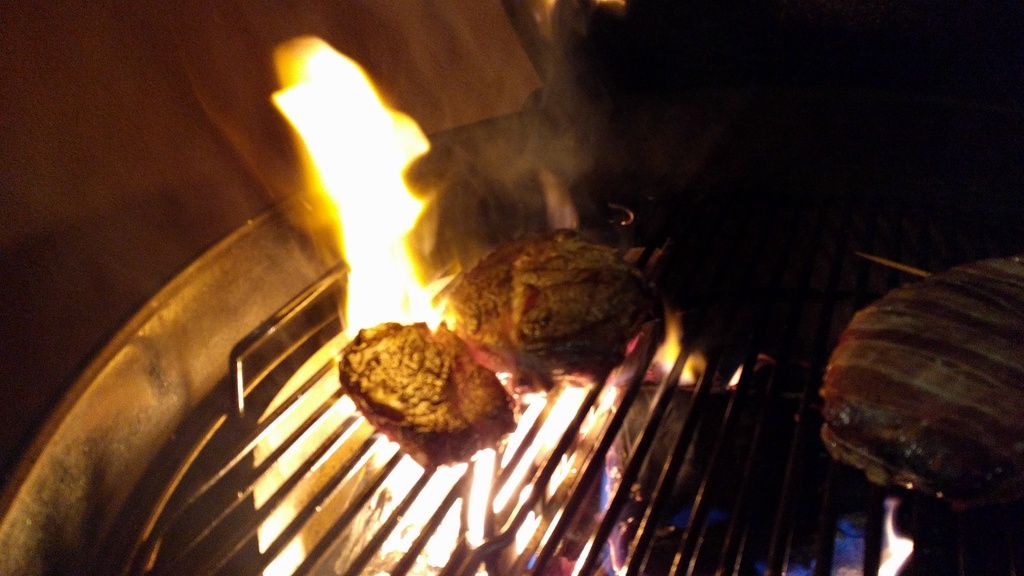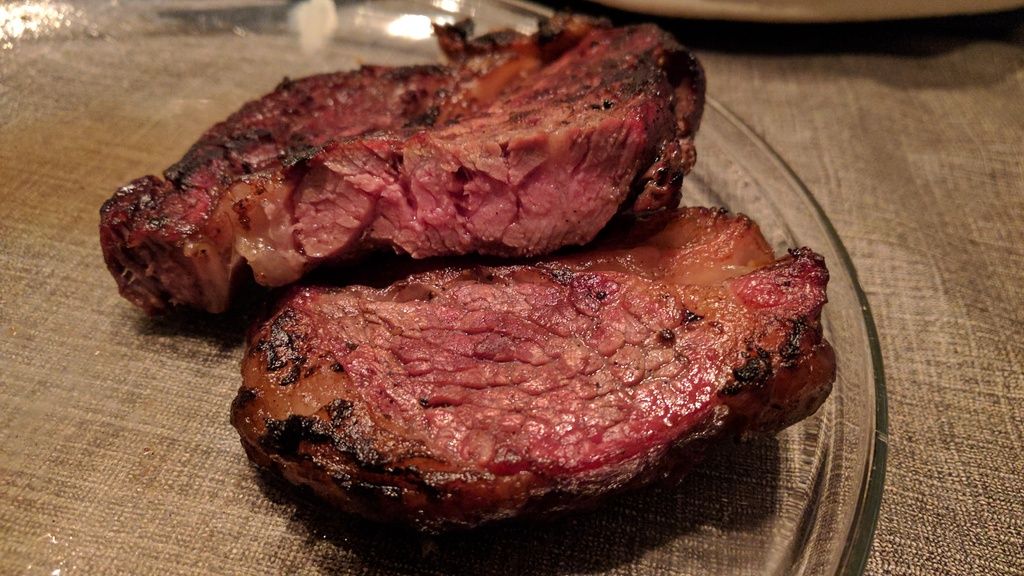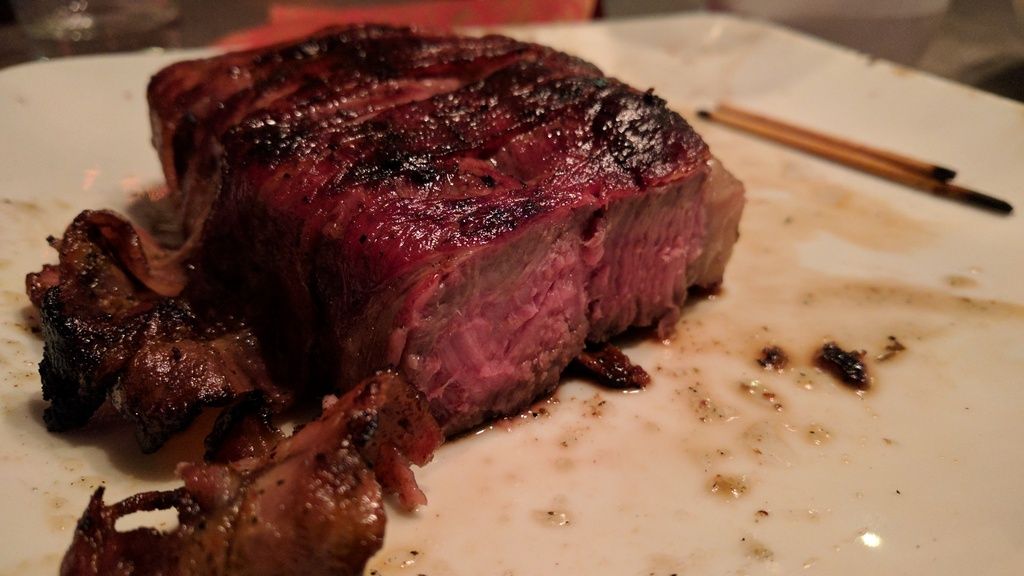Kristof Jozsa
TVWBB Fan
Reading through most of Meathead's book during the holidays, I gave a try of doing reverse searing the first time. What I got home from my butcher was a hungarian angus roast steak and another unidentified slice of beef which was pre-rubbed and wrapped in bacon.
Following Meathead's advices I dry rubbed the steak for 2 hours and cooked the meats pulled out right from the fridge. To reach some higher sear temps, with a sudden idea I had put the two Weber briqs holder on each other to elevate the heat source and get a bit closer to the grates. I was using 3/4 chimney of lump for this cook with some pecan chips. After bringing the cold meats gently to 120F on the indirect side, they were incredible soft and tender - I didn't experience this with other methods.
Now to the fun part. Meathead suggests searing right over radiant heat with the lid off, turning frequently and trying _not_ to get grill marks from the grates. I tried following all advices but I'm well.. unsure about the flames. It's about impossible to shoot a good action shoot in the dark with my phone but should it really look something like this? The steak was about constantly on fire with flames reaching 8" or so:

I kept going nevertheless, turning the meat in every 40-60 seconds, trying to move it around continuously - the steak got even torn along a strip of fat in the wild action.
A more peaceful shot from the other bacon wrapped one (I love this pic):

The whole searing took about 6-7 minutes or so.
The results were really outstanding, tasting better than probably anything I grilled before. The steak:


and the bacon wrapped one:

I assume the latter's having those gray areas are explained with the bacon passing more heat to the meat during the cook - just guessing though. What do you think?
Following Meathead's advices I dry rubbed the steak for 2 hours and cooked the meats pulled out right from the fridge. To reach some higher sear temps, with a sudden idea I had put the two Weber briqs holder on each other to elevate the heat source and get a bit closer to the grates. I was using 3/4 chimney of lump for this cook with some pecan chips. After bringing the cold meats gently to 120F on the indirect side, they were incredible soft and tender - I didn't experience this with other methods.
Now to the fun part. Meathead suggests searing right over radiant heat with the lid off, turning frequently and trying _not_ to get grill marks from the grates. I tried following all advices but I'm well.. unsure about the flames. It's about impossible to shoot a good action shoot in the dark with my phone but should it really look something like this? The steak was about constantly on fire with flames reaching 8" or so:

I kept going nevertheless, turning the meat in every 40-60 seconds, trying to move it around continuously - the steak got even torn along a strip of fat in the wild action.
A more peaceful shot from the other bacon wrapped one (I love this pic):

The whole searing took about 6-7 minutes or so.
The results were really outstanding, tasting better than probably anything I grilled before. The steak:


and the bacon wrapped one:

I assume the latter's having those gray areas are explained with the bacon passing more heat to the meat during the cook - just guessing though. What do you think?
Last edited:
